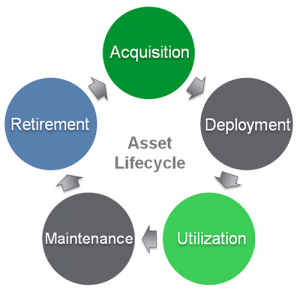With the wealth of data being collected through social media, customer web portals, and the Internet of Things (IoT), utility and telecommunications companies can enhance decision-making through the quickly developing field of data analytics.
The growth of Advanced Metering Infrastructure (AMI) has led to a significant increase in the amount of raw data being gathered every hour for utility companies. Typically, said data has been used to support billing processes; however, this is but one of the broad range of opportunities made available through AMI. Many utilities are also expanding their online data collection upstream of the meter, with an increase in monitoring devices for flow, pressure, voltage, current and temperature.
For companies offering competitive retail services in the utility and telecommunications space, the most interesting data is that of the customer; however, even in non-competitive markets, it has become common-place for companies to place a high-priority on customer experience. The use of social media and web portals is not only a great way to interact with customers, but it provides valuable customer information. By collecting and storing information about customer demographics, consumption habits, and engagement, retailers can provide more effective and targeted commercial offers.
For network operators and retailers alike, the age of manually sifting through raw data to find out what is going on is over. By applying advanced data analytics to your core processes, your company can turn terabytes of raw data into meaningful information, predictions, and recommendations, letting you take the guesswork out of running your business. Data analytics is a booming industry which seeks to make sense of the unprecedented amount of data being generated and stored every day. Using advanced computational techniques, this field promises to not only tell you what is going on; but make predictions about what will happen in the future and even advise you of the best course of action.
According to Navigant Research, global utility analytics revenue is expected to grow from $944.8 million in 2016 to $3.6 billion in 2025(1)
There are three main types of Data Analytics; prescriptive, predictive, and descriptive. The table below compares these three types using traffic analytics as an example.
| Analysis Type | Complexity | Information Provided | Example |
| Prescriptive | High | What you should do | Follow these directions to get to your destination as fast as possible |
| Predictive | Medium | What will happen | Traffic on the southern motorway is expected to increase at midday |
| Descriptive | Low | What is happening | There is currently no traffic on the southern motorway |
As you can see, prescriptive is clearly the most useful of the three; however, it also requires the most software development, data access, and processing power. Most data analysis systems currently fall into the descriptive category; however, over time it is expected that the complexity of these systems is going to increase and move further into the predictive and prescriptive space.
For now, there are six main areas where your company can benefit from Data Analysis:
Asset Lifecycle Management
One of the principal concerns of a network operator is how to most efficiently plan asset maintenance and replacement work by balancing maximum useful life against the risk of equipment failure. Modern data analytics systems can use statistical analysis to give you a more accurate estimate of asset health by analyzing the factors which go into asset failure and drawing insights from historical data.
When planning and designing the installation of electrical network elements, a large amount of care is given to ensure that each element will not be operated outside of its rated conditions. This consideration for asset lifecycle during the design stage is certainly important, but often, little is done throughout the rest of the asset’s life to estimate how it is coping while in service.

In the case of a power transformer, protective elements are installed during deployment which coincide with the transformers damage curve, but how can one know the actual damage being done to the transformer due to everyday use, overloading, and fault currents?
Data analytics seeks to solve problems such as these by using all the data available over the lifetime of a large group of transformers to come up with an in-depth asset health model. This model essentially characterizes a statistical relationship between operating conditions (voltage, current, temperature) and signs of damage recorded by routine maintenance. Note that for such a system to work, the data analytics solution would need access to multiple business areas and the maintenance reports would need to be in a computer-readable format.
In any industry, using intelligent predictions about asset health can help you reduce the chance of prematurely retiring equipment or leaving an asset in service until it fails.
Enhanced Customer Segmentation
Utility and telecommunications companies typically use broad strokes to categorize their customers as they lack the tools to make the most out of the available customer data. With advanced data analytics, it is possible to take customer segmentation to a whole new level.
Machine learning algorithms can use factors such as social media interaction, past commercial transactions, and historical service usage to really get to know customers. With this information, predictions can be made about how customers are likely to respond to new offers or different rating structures. In a competitive market, enhanced segmentation can be instrumental in reducing customer churn by identifying the customers most likely to stop using your service.
A 5% increase in customer retention produces more than a 25% increase in profit(2)
This unique ability to provide a targeted response to customers at risk of leaving could prove a significant advantage over competitors.
Fraud Detection
Unfortunately, some customers will try and steal from you. It is possible to notice suspicious behavior by looking through the service usage history of a customer with a keen eye, but this is not a practical method for detecting fraud across the entire range of connected customers. Thanks to the rise of smart meters, there is now enough information available that a data analytics system can automatically assess usage patterns and alert you if it encounters any suspicious activity.
Improved Network Usage
By applying data analytics to the daily traffic in your network, you can intelligently adjust configurable network elements to free up capacity based on current or forecasted demand.
In the telecommunications industry, the continuously growing demand for bandwidth has led many companies to adopt software-defined WAN (SD-WAN), a technology which relies on dynamic path selection to reduce cost and increase reliability.
In the electric industry, data analytics is being used to give networks the ability to automatically detect faults and greatly reduce outage times. Duke Energy, an electric and gas company in Charlotte, NC, has seen great improvements to its network after adopting these practices.
“What used to take about an hour now takes less than 30 seconds, so it’s a great improvement in terms of customer minutes of interruption” – Sacha Fontaine (Smart Grid Consultant, Duke Energy)(3)
In addition to responding to current issues, predictive analysis can help make decisions to best optimize your network for the near future. Intelligent correlation between service usage and external factors such as weather patterns, public holidays, and big sports matches can be used to give you a better idea of how customers are going to use your network. This type of forecasting can be especially useful for dealing with the inherently unpredictable power flows caused by distributed solar generation.
Regulatory Compliance
As big data, smart metering, and data analytics open-up the way for many new innovations, regulatory authorities are, in turn, increasing their expectations. Regulators are requesting increasingly in-depth reports under tight deadlines with the assumption that the industry has modern information processing tools to deal with these requests. Without a powerful system for storing, accessing, and analyzing the large amount of data required to satisfy these new requirements, companies may struggle to find and effectively process their data for regulatory compliance.
Optimized Network Planning
With an advanced data analytics system, network planning decisions for large capital expenditure projects can be supported by an automatically generated and in-depth forecast of the likely impact to a variety of KPIs. These forecasting processes typically use a Monte Carlo simulation which relies on a probabilistic approach to make predictions based on numerous unknown parameters. With a large amount of historical data, a well-designed algorithm, and enough processing power, this technique can significantly reduce the uncertainty of long-term network planning.
Data analytics has a lot to offer telecommunications and utility companies. If you have recently installed smart meters or other online data-gathering technology on your network, it could be the perfect time to take another step forward into the future. But before you get started, some consideration should be given as to how this will work with your current IT architecture.
One of the main barriers to the successful adoption of data analytics technology is the fact that many utility and telecommunications companies are already dealing with an overcrowded software ecosystem. When software packages are designed with a single purpose in mind, it is often too difficult to achieve the level of integration required for advanced data analytics functions. Attempting to adopt data analytics in this situation can be costly, time-consuming, and ultimately disappointing.
Smartflex is an integrated CIS and Field Service solution which covers a wide range of business functions and serves as a strong centerpiece for a cohesive software ecosystem. On top of its native data analytics functions, the solution’s state-of-the-art data management systems provide controlled access to information from a broad range of business areas, setting the stage for effective integration with data analytics applications.







